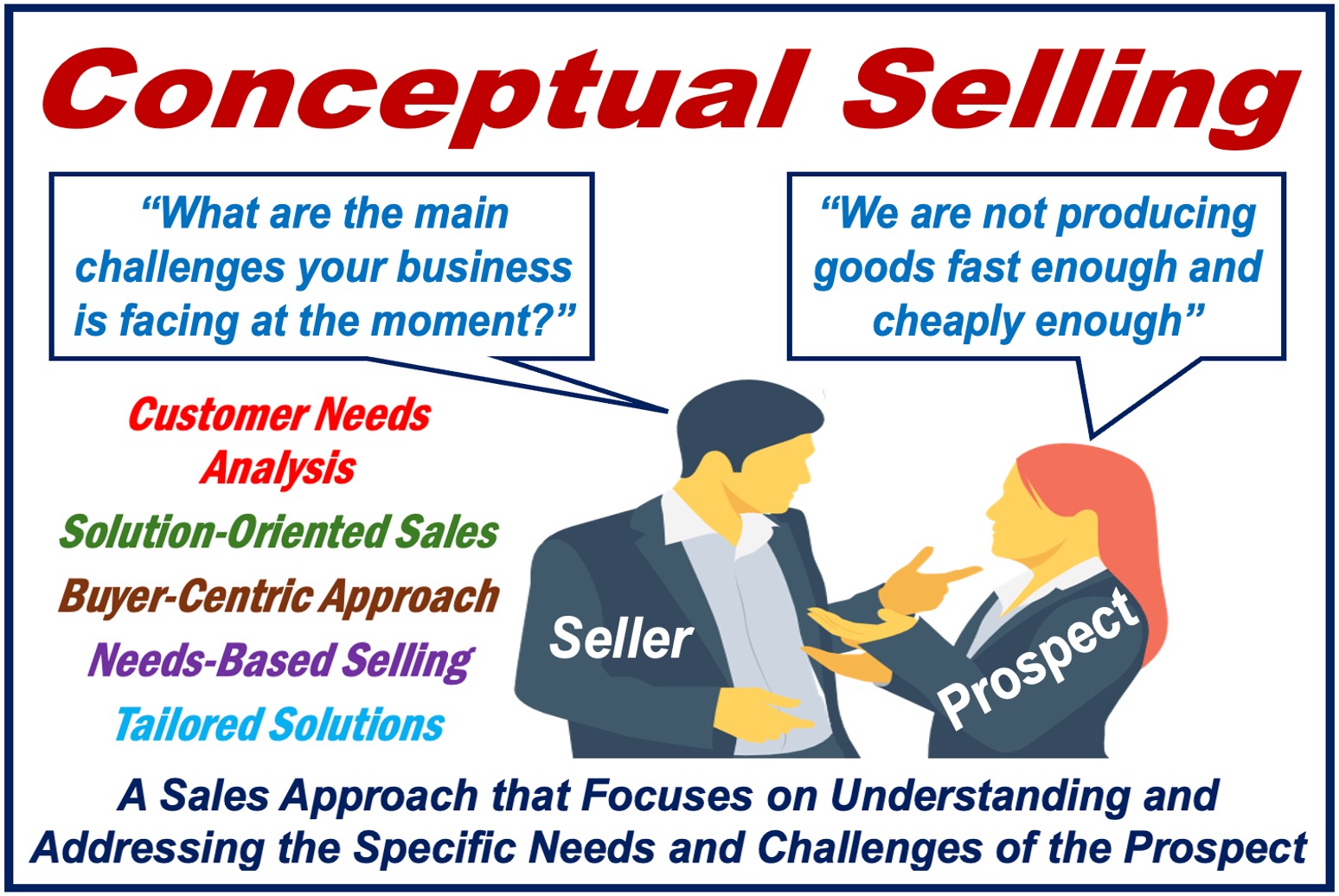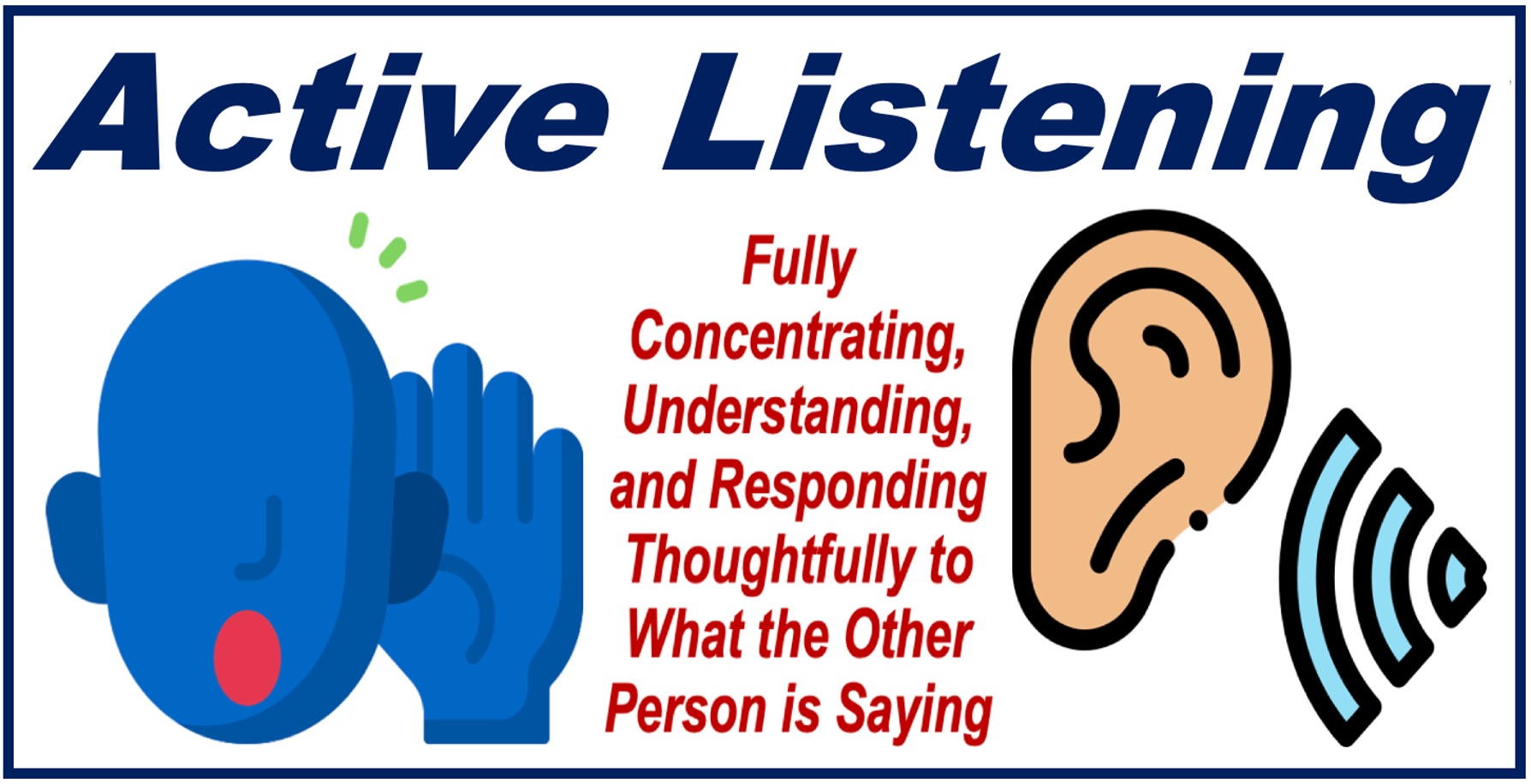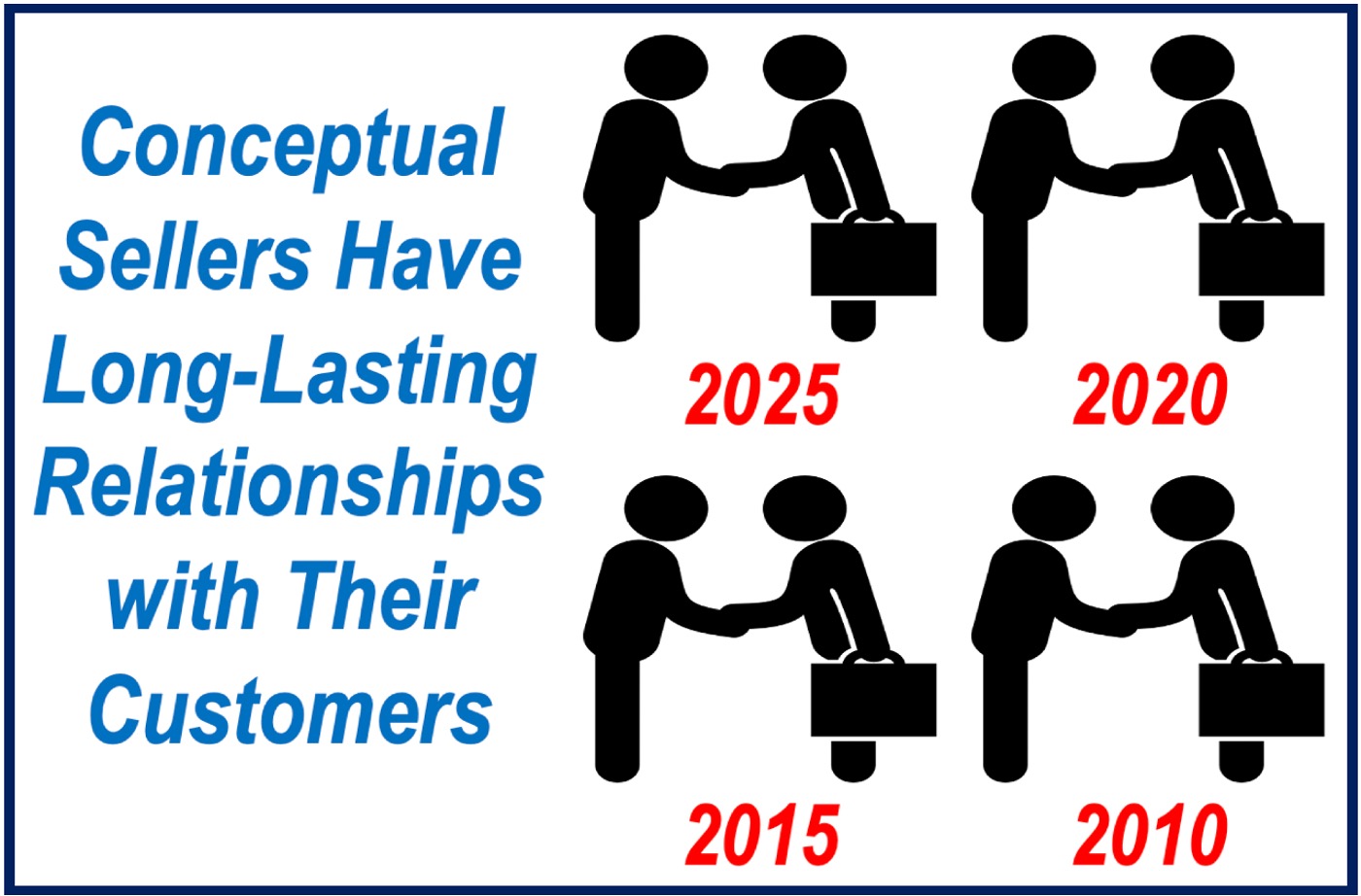When you sell, do you focus on your prospect’s or customer’s needs and wants more than on the features and benefits of your product or service? If so, you are a Conceptual Seller – you practice Conceptual Selling or Conceptual Sales.
When you are talking to a prospect, you focus on understanding their needs and offering solutions that align with those needs.
This type of selling contrasts with traditional sales approaches that emphasize pushing a product or service. As a conceptual seller, you aim to create a deeper connection with the *prosect.
* A prospect is somebody who you believe has a good chance of turning into a paying customer. From this point forward, whenever you see the word “customer,” it also includes “prospect” and vice versa, and whenever you see the word “product,” it also means “service” and vice versa.
People who practice conceptual selling seek to build trust and provide tailored solutions that meet specific customer requirements.
Product solves a problem
Conceptual sellers believe that buyers don’t care about a product’s features; what matters to them is how it will solve their problem.
Growth Hackers has the following definition of the term:
“Conceptual selling is a process of selling that focuses on the customer’s needs and wants rather than on the features and benefits of the product or service. In other words, it’s all about solving the customer’s problem, not just about selling them something.”
“This approach to sales is based on the belief that customers don’t care about the features of a product or service. They only care about how it will solve their problem.”
When you meet a prospect, you engage in a detailed conversation to uncover their needs, *pain points, and goals.
* Pain points are specific problems or challenges that a customer faces and seeks to resolve.
The information that you gather from your prospect forms the basis of your sales strategy. You present your product as the ideal solution to their specific problems.

Key Elements of Conceptual Selling
Let’s have a look at five key elements of this sales method:
-
Customer-Centric Approach
Your primary focus is the customer. You invest time in understanding their business, pain points, and their objectives. You ensure that your sales pitch is relevant and compelling.
-
Open-Ended Questions
Open-ended questions, rather than “yes/no” questions, encourage people to share more about their needs and expectations. They help you gather valuable insights and tailor your sales messages accordingly.
-
Active Listening

This element goes hand-in-hand with asking questions. You must listen very carefully to understand your customer’s perspective fully.
If you are a good listener, not only will you build trust, but also ensure that your proposed solution is on point.
-
Customized Solutions
Based on the insights you gather, you craft solutions that are specifically designed to meet your customers unique needs.
This customized approach differentiates conceptual selling from more generic sales methods.
-
Building Relationships
Conceptual selling emphasizes long-term relationships over one-time transactions. By focusing on the customer’s ongoing needs and providing consistent value, you can build strong, lasting relationships.
Benefits of Conceptual Selling
Conceptual selling offers several benefits for both the seller and the buyer.
-
Customer Satisfaction and Loyalty
This approach can lead to higher customer satisfaction and loyalty. By addressing the customer’s specific needs, you can create a more positive buying experience, which often results in repeat business and referrals.
-
Relevant Solutions
For the buyer, conceptual selling means receiving solutions that are better suited to their needs.
Instead of being pushed to buy a product or service that may not be a perfect fit, customers receive tailored recommendations that can genuinely help their business.
-
Long-Term Business

If you invest time getting to know your customer’s needs and provide solutions to their problems, they are more likely to stay with you for a long time.
-
Brand Image
By consistently providing tailored and effective solutions, your brand image can improve. Satisfied customers are likely to share their positive experiences, enhancing your brand’s credibility and attracting more prospects.
Implementing Conceptual Selling
To implement conceptual selling effectively, you must make sure that your sales team are properly trained and have the right tools.
-
Training
They must develop strong communication skills, particularly in asking the right type of questions (open-ended ones) and active listening.
Your salespeople should also be adept at researching and understanding their target industries and businesses.
-
Tools
There are many tools available today that can help your salespeople function more effectively.
Customer relationship management (CRM) systems can help track customer interactions and gather the insights needed for a successful conceptual selling approach.
Other Sales Methods
In sales, numerous techniques exist beyond “Conceptual Selling.” Let’s take a look at some of these methods.
Direct selling involves selling products directly to consumers outside traditional retail settings, often through personal interactions and demonstrations.
Needs-based selling tailors the sales strategy to align with the unique requirements and challenges of the prospect, offering solutions that specifically address their needs.
Enterprise selling targets large corporations and major organizations, involving complex, high-stakes sales that often require engagement with multiple decision-makers.
Strategic selling employs a systematic approach to complex sales, engaging multiple stakeholders and spanning longer sales cycles. It requires meticulous planning and alignment with the customer’s strategic goals.
This method emphasizes the product’s value proposition, concentrating on the tangible benefits the customer will experience.
Transactional selling focuses on quick sales by emphasizing product features and benefits, rather than building long-term relationships. The goal is to close the deal quickly and move on to the next prospect.
Solution selling positions your product or service as the best solution to the prospect’s specific challenges.
Cross-selling involves offering additional products or services that complement the customer’s initial purchase.
-
Inbound Selling or Inbound Marketing
Inbound selling aims to attract potential customers by providing valuable content and fostering connections before initiating a sales proposal.
Team selling harnesses the collective skills of a group to meet the needs of complex sales situations, ensuring comprehensive coverage of the client’s requirements.
This technique encourages customers to opt for a higher-end version of the product they are considering.
Relationship selling centers on building and maintaining long-term relationships with customers. This approach focuses on understanding the customer’s needs and providing personalized service to ensure ongoing satisfaction and loyalty.
Final Thoughts
In conclusion, conceptual selling is a powerful sales strategy that prioritizes your customer’s needs and focuses on building long-term relationships.
By understanding your buyer’s situation and offering customized solutions, you can enhance customer satisfaction and achieve better sales outcomes.
Video – What is Conceptual Selling?
This video, from our sister channel on YouTube – Marketing Business Network, explains what ‘xx’ is using simple and easy-to-understand language and examples. is using simple and easy-to-understand language and examples.
